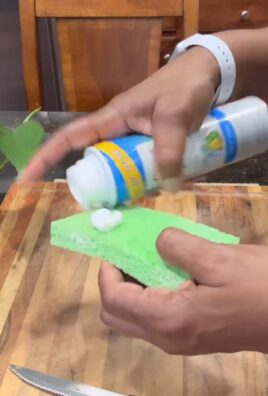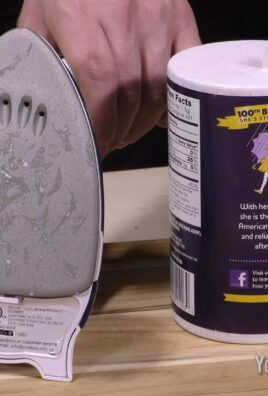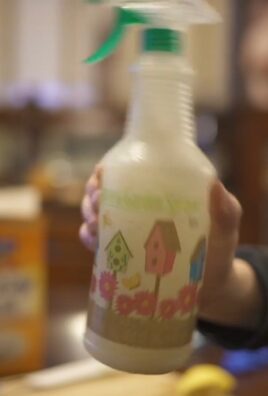Candle Making Hacks: Ever dreamt of filling your home with the warm glow and comforting scent of your own handcrafted candles? I know I have! There’s something incredibly satisfying about creating something beautiful and useful with your own two hands. But let’s be honest, the world of candle making can seem a little intimidating at first, with all the talk of waxes, wicks, and fragrance loads.
Candles have been illuminating our lives for centuries, dating back to ancient civilizations who used them for light, religious ceremonies, and even as a way to tell time. From simple tallow dips to the sophisticated scented creations we enjoy today, candles hold a special place in our hearts and homes.
That’s where these candle making hacks come in! I’m here to share some of my favorite tips and tricks to simplify the process, save you money, and help you create stunning candles that you’ll be proud to show off. Forget complicated techniques and expensive equipment. These DIY hacks will empower you to unleash your inner artisan and transform your space with personalized, fragrant light. Whether you’re a complete beginner or a seasoned crafter, you’re sure to find some new and exciting ways to elevate your candle making game. So, grab your supplies, and let’s get started!

DIY Candle Making Hacks: Level Up Your Candle Game!
Hey there, fellow candle enthusiasts! I’m so excited to share some of my favorite candle making hacks with you. I’ve been making candles for years, and I’ve learned a few tricks along the way to make the process easier, more efficient, and, most importantly, to create amazing candles that smell divine and look beautiful. Get ready to elevate your candle game!
Essential Supplies Checklist
Before we dive into the hacks, let’s make sure you have everything you need. This is my go-to list for a successful candle-making session:
* **Wax:** Soy wax, beeswax, paraffin wax – the choice is yours! I personally love soy wax for its clean burn and eco-friendliness.
* **Wicks:** Pre-tabbed wicks are a lifesaver! Choose the right size wick for your container diameter to ensure a proper burn pool.
* **Fragrance Oils or Essential Oils:** This is where the magic happens! Experiment with different scents to create your signature blends.
* **Containers:** Jars, tins, teacups – get creative! Just make sure they’re heat-safe.
* **Double Boiler or Heat-Safe Bowl and Saucepan:** For melting the wax safely.
* **Thermometer:** A candy thermometer or digital thermometer is crucial for monitoring the wax temperature.
* **Pouring Pitcher:** Makes pouring the wax into containers much easier and cleaner.
* **Stirring Utensil:** A chopstick, wooden spoon, or heat-resistant spatula works perfectly.
* **Scale:** For accurately measuring wax and fragrance oils.
* **Optional Add-ins:** Dyes, dried flowers, glitter – let your creativity shine!
* **Safety Gear:** Oven mitts, apron, and eye protection are always a good idea.
Hack #1: Perfect Wick Placement Every Time
Getting the wick centered in your container can be tricky, but this hack makes it a breeze!
* **The Problem:** Wobbly wicks that lean to one side, resulting in uneven burning.
* **The Solution:** Wick stickers and wick centering devices.
**Step-by-Step Instructions:**
1. **Prepare Your Container:** Make sure your container is clean and dry.
2. **Apply Wick Sticker:** Peel off the backing of a wick sticker and firmly attach it to the metal tab at the bottom of your wick.
3. Center the Wick:** Carefully place the wick in the center of your container, pressing down firmly to secure the sticker.
4. **Use a Wick Centering Device:** Place a wick centering device (you can find these online or at craft stores) over the top of your container, threading the wick through the center hole. This will keep the wick perfectly centered while the wax cools and hardens. You can also use two chopsticks or pencils laid across the top of the container, securing the wick in the middle with tape.
5. **Pour Wax and Let Cool:** Pour your melted wax into the container and let it cool completely. Once the wax is solid, remove the wick centering device.
Hack #2: Mastering the Double Boiler Method
Melting wax directly on the stovetop is a recipe for disaster (and potentially a fire!). The double boiler method is the safest and most effective way to melt wax.
* **The Problem:** Scorched wax, uneven melting, and potential fire hazards.
* **The Solution:** Using a double boiler or a heat-safe bowl over a saucepan.
**Step-by-Step Instructions:**
1. **Set Up Your Double Boiler:** Fill a saucepan with a few inches of water. Place a heat-safe bowl on top of the saucepan, ensuring the bottom of the bowl doesn’t touch the water.
2. **Add Wax to the Bowl:** Place your wax flakes or blocks into the heat-safe bowl.
3. **Heat the Water:** Bring the water in the saucepan to a simmer over medium heat.
4. **Monitor the Wax Temperature:** Use a thermometer to monitor the wax temperature. Different waxes have different melting points, so refer to the manufacturer’s instructions.
5. **Stir Occasionally:** Stir the wax occasionally with a chopstick or wooden spoon to ensure even melting.
6. **Remove from Heat:** Once the wax is completely melted, remove the bowl from the saucepan. Be careful, as the bowl will be hot! Use oven mitts to protect your hands.
Hack #3: Fragrance Oil Perfection: Timing is Everything!
Adding fragrance oil at the right temperature is crucial for a strong and long-lasting scent throw.
* **The Problem:** Weak scent, fragrance oil evaporating, or a cloudy appearance in the candle.
* **The Solution:** Adding fragrance oil at the correct temperature and stirring thoroughly.
**Step-by-Step Instructions:**
1. Check Fragrance Oil Instructions: Different fragrance oils have different flash points (the temperature at which they evaporate). Check the manufacturer’s instructions for the recommended temperature to add the fragrance oil. Generally, it’s around 180-185°F (82-85°C) for soy wax.
2. **Cool the Wax Slightly:** After removing the melted wax from the heat, let it cool slightly to the recommended temperature.
3. **Add Fragrance Oil:** Carefully pour the fragrance oil into the melted wax. A general rule of thumb is to use 6-10% fragrance oil by weight. Use your scale to measure accurately!
4. **Stir Thoroughly:** Stir the fragrance oil into the wax for at least 2 minutes, ensuring it’s completely incorporated. Use a gentle, consistent stirring motion to avoid creating air bubbles.
5. **Pour Immediately:** Pour the fragranced wax into your prepared containers as soon as possible after stirring.
Hack #4: Dyeing Candles Like a Pro
Adding dye to your candles can create beautiful and vibrant colors.
* **The Problem:** Uneven color distribution, too much dye, or dye clumping.
* **The Solution:** Using dye chips or liquid dyes and melting them properly.
**Step-by-Step Instructions:**
1. **Choose Your Dye:** You can use dye chips, liquid dyes, or even natural dyes like beetroot powder (for a pink hue). I prefer dye chips because they’re easy to measure and use.
2. **Melt the Dye:** Add the dye to the wax while it’s melting in the double boiler. Start with a small amount and add more until you achieve your desired color.
3. **Stir Thoroughly:** Stir the dye into the wax until it’s completely melted and evenly distributed.
4. **Test the Color:** Pour a small amount of the dyed wax onto a white surface (like a piece of paper) to check the color. Adjust the amount of dye as needed.
5. **Pour and Enjoy:** Once you’re happy with the color, pour the dyed wax into your prepared containers.
Hack #5: Preventing Sinkholes and Cracks
Sinkholes and cracks can sometimes appear in candles as they cool, especially with soy wax.
* **The Problem:** Unsightly sinkholes and cracks in the top of your candles.
* **The Solution:** A second pour or using a heat gun.
**Step-by-Step Instructions:**
1. **First Pour:** Pour the wax into your containers as usual, leaving about ¼ inch of space at the top.
2. **Let Cool Partially:** Allow the wax to cool partially, until a thin layer has formed on the surface.
3. **Second Pour (Optional):** If you notice any sinkholes or cracks forming, remelt the remaining wax (or a small amount of extra wax) and pour a thin layer over the top of the candle to fill in the imperfections.
4. **Use a Heat Gun (Alternative):** Alternatively, you can use a heat gun to gently melt the top layer of the candle and smooth out any imperfections. Hold the heat gun a few inches away from the surface and move it in a circular motion. Be careful not to overheat the wax.
5. **Let Cool Completely:** Allow the candle to cool completely undisturbed.
Hack #6: Boosting Scent Throw with Curing Time
Curing your candles allows the fragrance oil to fully bind with the wax, resulting in a stronger scent throw.
* **The Problem:** Weak scent throw, even with a high percentage of fragrance oil.
* **The Solution:** Allowing your candles to cure for at least a week before burning.
**Step-by-Step Instructions:**
1. **Let Candles Cool Completely:** After pouring your candles, let them cool completely undisturbed.
2. **Store in a Cool, Dark Place:** Store your candles in a cool, dark place for at least a week (or even two weeks for optimal results). This allows the fragrance oil to fully bind with the wax molecules.
3. **Resist the Urge to Burn:** I know it’s tempting to light your new candles right away, but trust me, the wait is worth it!
4. **Enjoy the Enhanced Scent:** After the curing period, light your candles and enjoy the enhanced

Conclusion
So, there you have it! These candle making hacks aren’t just about saving a few dollars (though that’s certainly a perk!). They’re about unlocking your creativity, minimizing waste, and crafting truly personalized candles that reflect your unique style and preferences. Forget those generic, mass-produced candles from the store. With a little ingenuity and these simple techniques, you can transform ordinary materials into extraordinary sources of light and fragrance.
The beauty of these hacks lies in their adaptability. Feeling adventurous? Experiment with different essential oil blends to create custom aromatherapy experiences. Lavender and chamomile for relaxation? Peppermint and eucalyptus for invigoration? The possibilities are endless! You can also play around with different waxes. Soy wax is a popular choice for its clean burn and eco-friendliness, but beeswax offers a natural honey scent and a longer burn time. Paraffin wax is the most common and affordable, but consider its environmental impact.
Don’t be afraid to get creative with your containers, too. Repurpose vintage teacups, mason jars, or even seashells for a truly unique and personalized touch. Just ensure the container is heat-resistant and free from any flammable materials. Adding natural dyes like beetroot powder for pink or spirulina for green can also elevate your candle’s aesthetic appeal. Remember to test small batches first to ensure the color payoff is to your liking.
These candle making hacks are more than just a trend; they’re a gateway to a fulfilling and creative hobby. They empower you to take control of the ingredients and processes, ensuring that your candles are not only beautiful but also safe and sustainable. Plus, homemade candles make incredibly thoughtful and personalized gifts for friends and family. Imagine the joy of giving a candle that you crafted with your own two hands, infused with a scent specifically chosen for the recipient.
We truly believe that anyone can master these candle making hacks with a little practice and patience. The key is to start small, experiment with different techniques, and most importantly, have fun! Don’t be discouraged if your first attempt isn’t perfect. Every candle you make is a learning experience, and with each batch, you’ll refine your skills and develop your own unique style.
So, what are you waiting for? Gather your supplies, unleash your inner artisan, and embark on your candle making journey today! We’re confident that you’ll be amazed at what you can create. And most importantly, we want to hear about your experiences! Share your creations, tips, and tricks in the comments below. Let’s build a community of passionate candle makers and inspire each other to create beautiful and fragrant works of art. Let us know what kind of candle making hacks you tried and what you would like to see next!
Frequently Asked Questions (FAQ)
What type of wax is best for candle making?
The “best” wax depends on your priorities. Soy wax is popular for its clean burn, eco-friendliness, and ability to hold fragrance well. Beeswax offers a natural honey scent and a longer burn time but can be more expensive. Paraffin wax is the most common and affordable but is derived from petroleum and has a less clean burn. Consider your budget, desired scent throw, and environmental concerns when choosing your wax. For beginners, soy wax is often recommended due to its ease of use and forgiving nature.
How do I choose the right wick size for my candle?
Choosing the correct wick size is crucial for a safe and effective candle burn. A wick that’s too small will result in tunneling (where the wax only melts in the center), while a wick that’s too large will produce excessive smoke and soot. Wick size depends on the diameter of your container and the type of wax you’re using. Most wax suppliers offer wick size charts that provide recommendations based on these factors. It’s always best to err on the side of caution and start with a slightly smaller wick, as you can always increase the size in subsequent batches if needed. Testing your candles with different wick sizes is essential to find the perfect match.
Can I use regular fragrance oils in candle making?
Not all fragrance oils are created equal. It’s essential to use fragrance oils specifically designed for candle making. These oils are formulated to withstand the high temperatures of melted wax and are safe to burn. Regular fragrance oils, such as those used in perfumes or diffusers, may not be compatible with wax and can produce unpleasant odors or even be flammable. Look for fragrance oils that are labeled as “candle safe” or “phthalate-free.”
How much fragrance oil should I add to my candles?
The recommended fragrance load (the percentage of fragrance oil to wax) varies depending on the type of wax and the strength of the fragrance oil. A general guideline is to use between 6% and 10% fragrance oil. However, it’s crucial to consult the manufacturer’s instructions for both the wax and the fragrance oil you’re using. Adding too much fragrance oil can cause the candle to sweat, smoke, or even become flammable. Start with a lower percentage and gradually increase it until you achieve the desired scent throw.
What can I do to prevent my candles from tunneling?
Tunneling occurs when the wax only melts in the center of the candle, leaving a ring of unmelted wax around the edges. To prevent tunneling, ensure that you’re using the correct wick size for your container. Also, allow the candle to burn long enough for the entire surface of the wax to melt completely during the first burn. This creates a “memory ring” that will help the candle burn evenly in subsequent uses. If tunneling does occur, you can try wrapping the candle in aluminum foil, leaving a small opening at the top, to help melt the remaining wax.
How do I fix a candle with a cracked or uneven surface?
Cracking or uneven surfaces can occur due to rapid cooling or temperature fluctuations. To fix this, you can gently reheat the surface of the candle with a heat gun or hairdryer until the wax melts and smooths out. Alternatively, you can pour a thin layer of melted wax over the surface to fill in any cracks or imperfections. Ensure that the wax is the same type and color as the original candle.
Are there any safety precautions I should take when making candles?
Safety is paramount when making candles. Always work in a well-ventilated area and keep flammable materials away from your work space. Use a double boiler or a dedicated wax melting pot to melt the wax, and never heat wax directly on a stovetop, as it can be flammable. Use a thermometer to monitor the wax temperature and avoid overheating. Wear heat-resistant gloves and eye protection to prevent burns. Never leave melting wax unattended, and keep children and pets away from the area. Always extinguish candles properly and never leave them burning unattended.
Can I use essential oils instead of fragrance oils in candle making?
Yes, you can use essential oils in candle making, but there are a few things to keep in mind. Essential oils have a weaker scent throw than fragrance oils, so you may need to use a higher concentration to achieve the desired fragrance. Some essential oils can also affect the burn quality of the candle. It’s important to research the specific essential oils you’re using and test them in small batches before making a large batch of candles. Also, be aware that some essential oils are flammable and should be used with caution.
How do I clean up spilled wax?
Spilled wax can be a pain to clean up, but it’s manageable with the right techniques. Allow the wax to cool and harden completely. Then, use a dull knife or scraper to gently lift the wax from the surface. For fabric or carpets, place a piece of paper towel or brown paper bag over the wax and iron it on low heat. The heat will melt the wax, which will then be absorbed by the paper. Repeat as needed until all the wax is removed. For hard surfaces, you can use a hairdryer to soften the wax and then wipe it away with a cloth.




Leave a Comment